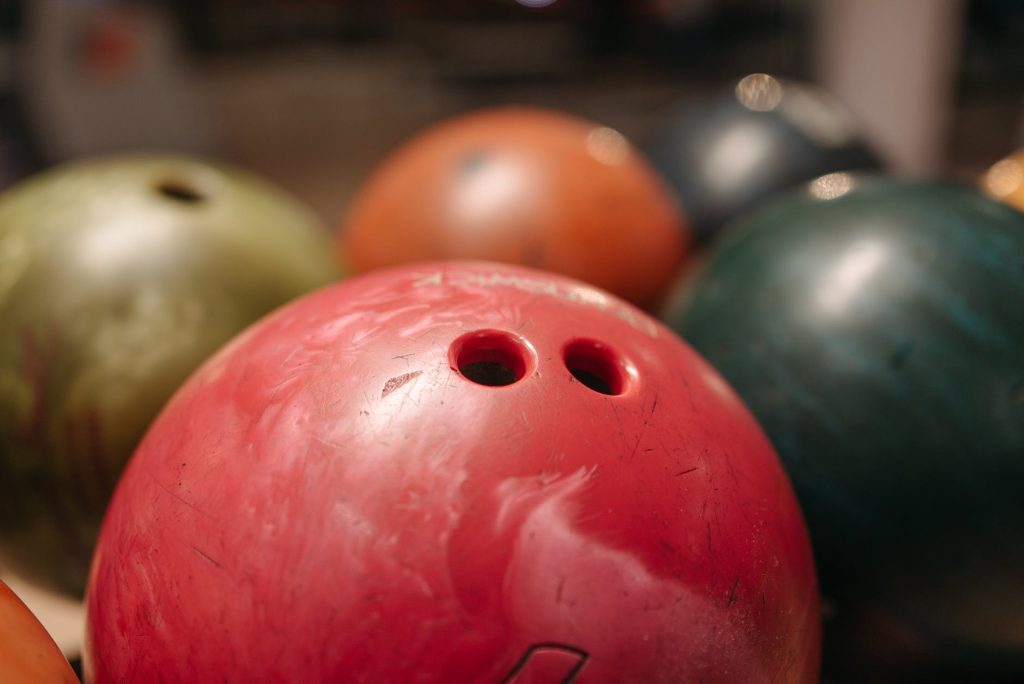Do you remember your first time playing bowling at places like Round 1? Pretty sure it wasn’t about lane appreciation, or what size of shoe you were supposed to wear. We’re sure that the very first sensation that left an imprint on your bowling-memory lane was the sheer weight of the ball.
It’s heavy, and not a lot of people will be able to play bowling properly if they can’t lift the ball from the rack. That’s fine. You either have two choices when faced with this dilemma: play candlepin bowling, or watch other people enjoy the sport.
But wait! We wrote this guide specifically for people who find bowling balls too heavy. Disclaimer: Any advice we give on this article is representative of what the bowling community thinks is acceptable. Always consult a physician before playing any sport that lies outside the bounds of your physical capacity.
Bowling Balls Are Intentionally Heavy
But not in the sense that you won’t be able to pick up any lighter balls from the rack. Yes, bowling balls are generally heavy, but as with other kinds of items, there are sizes available. The lightest bowling ball is 2.75 kg, and the heaviest ball is 7.25 kg.
That’s good news for weak armed people right? Even 3 year old kids can play bowling (so long as there is professional guidance) and they don’t have problems lifting the balls up.
The main reason why bowling balls are heavy is because they carry more force when thrown onto the lanes. Imagine playing something as light as tumbleweed – it won’t even nudge the front pin. It’s physics: the heavier the object, the more force it carries.
Heavier Balls Prevent Wrist Injury
Heavier balls actually pull on your muscles so that you won’t be able to curl your wrist when throwing a ball. This is the right technique after all. When using lighter balls, your forearm strength will actually be a cause for injury rather than the weight of the ball itself.
Your objective is to swing the ball, not throw it with arm strength. Most of the tension will be on your shoulders and fingers, but not on the wrist.
Ball Weights Help You Develop Your Technique
There’s a gradation for the ball weights, and usually you’ll eventually develop the necessary arm strength to go for the heavier ball weights. While you try perfecting your throw, you will learn how to spin the ball.
Bowling balls contain a core that is shaped in a unique way. Professionals take advantage of this to make impressive hooks and other bowling tricks only known to those who master the game.
Heavier Ball Weights Tackle More Pins
Because ball weights translate directly to power or striking power, heavier ball weights will always have a better chance of hitting more pins. Heavier balls are meant to “drag” as many pins as they can when they make contact.
While on the topic of pins, heavier balls actually travel with so much speed and force it’s possible to leave 3 pins perfectly standing. Heavier balls help moderate the strength you put in a forward swing, with your wrist giving it a gentle nudge instead of a hard shove.
As you develop better techniques in bowling, you will find out that a hook is able to tackle more balls instead of a straight delivery. That’s why you should take your time being comfortable with the heaviest ball you can carry, then attempting to master the hook.
So, heavier balls are better?
Yes. Unless you want to do this as some sort of weird celebration of your strength as a bowler, always go for heavier bowling balls.
In short, heavier bowling balls:
- Travel faster
- Hit harder
- Make your throws/swings better
- Prevents wrist injury
- Help you develop your hook
- Give you more chances for strikes
Take note of these things next time you play in your center! Who knows? You might score a 300!
Do you have any recommendations for handling heavy bowling balls? If you do, don’t hesitate to add these in the comment section below!

